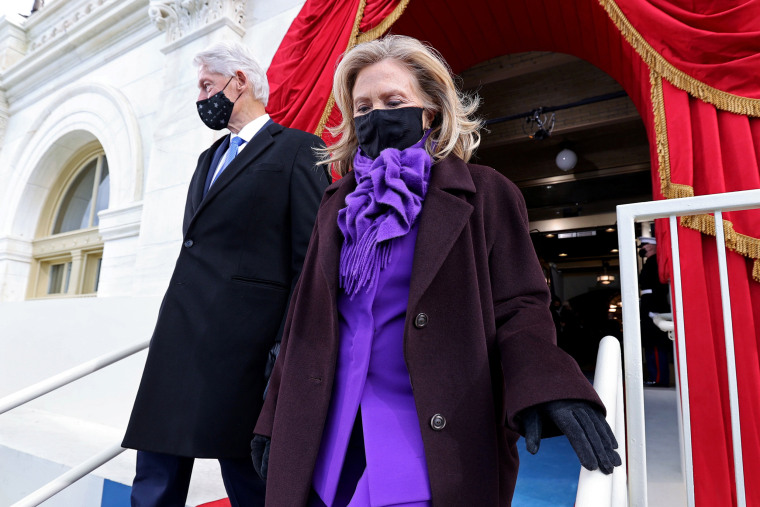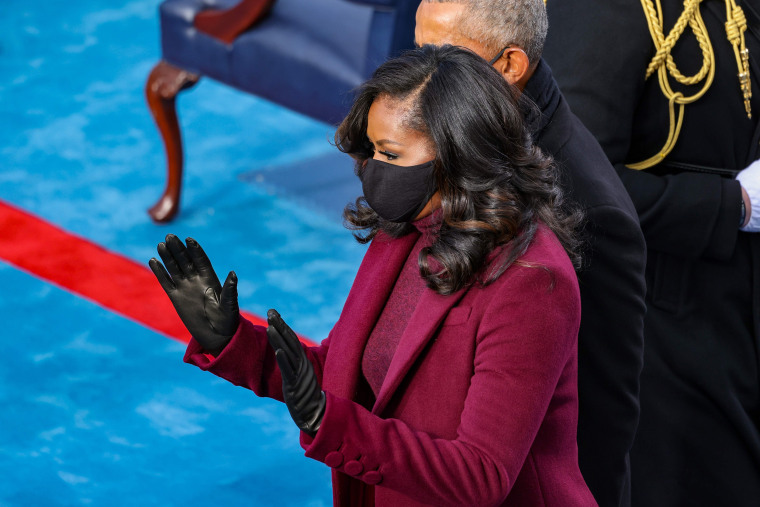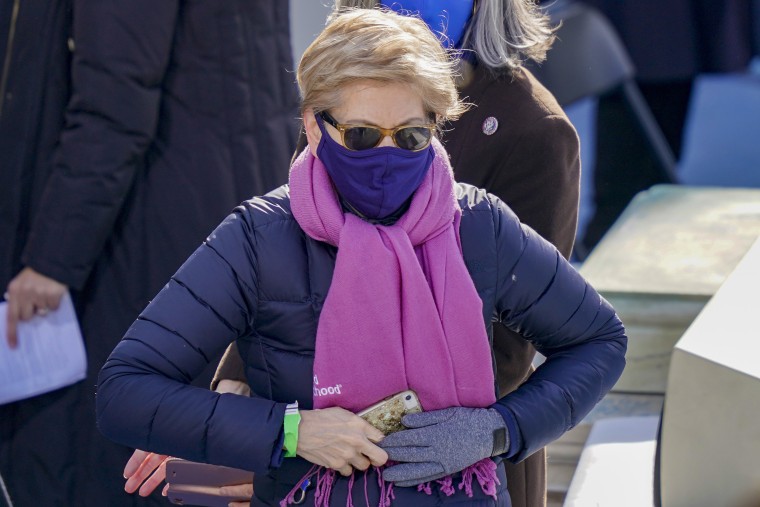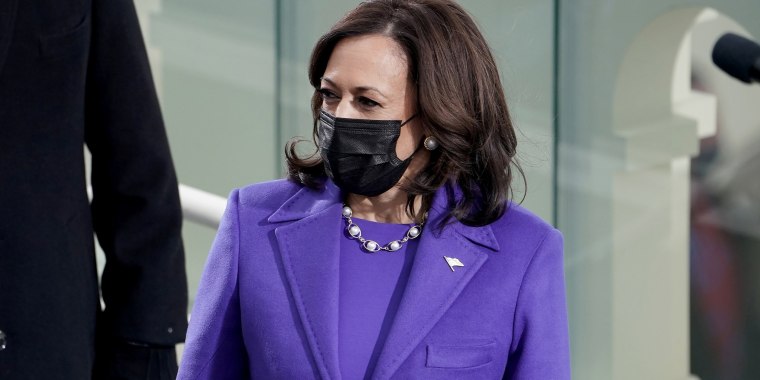Blue might be the Democratic Party's color, but on Wednesday, a lot of top politicians opted for something a little different: purple.
On the day she was sworn in as vice president, Kamala Harris wore an ankle-length coat in a rich purple hue, similar to the one that first lady Jill Biden wore the previous night during a COVID-19 memorial.

Former U.S. Secretary of State Hillary Clinton wore one of her trademark pantsuits — in purple, of course. And former first lady Michelle Obama's striking look was in the same color family: She wore a pair of wide-legged plum pants and a matching top and coat along with an eye-catching belt. Even Sen. Elizabeth Warren appeared to have gotten the memo, wearing a light purple scarf over her winter coat.

Many will remember that purple is also the color Clinton wore during her concession speech in 2016.
Coincidence? Not likely.
The color purple has lots of significance in politics and otherwise.
"We know that purple is the color of royalty," Ruth Sofaer-Morse, a fashion historian and custom hatter in California who watched the day's fashion unfold with great interest, told TODAY Style. "It generally represents richness and affluence because it was so hard to make for so long."

On a more literal level, purple is also what you get if you combine red and blue, the colors of the two political parties. Many on social media wondered if Harris and the others wore purple to show their commitment to bipartisanship. These looks could very well be a nod to unity, an important goal of the new administration after a year marked by much discord, unrest and violence. (In the past, President Joe Biden has referred to the U.S. as a "purple nation.")
Yet Sofaer-Morse believes the collective display of purple on Wednesday was more likely a nod to the women's suffrage movement, the decadeslong battle for the right for women to vote. Purple (along with white and green) was one of the movement's official colors. "Purple is the color of loyalty, constancy to purpose, unswerving steadfastness to a cause," the National Woman's Party of the U.S. wrote in a newsletter in 1913, according to the National Park Service.
It was also the color of the National Association of Colored Women, an organization that was in part founded to help get voting rights for Black women since they were often left out of the larger women's suffrage movement.
For Harris, in particular, Sofaer-Morse wondered if the color could also be a nod to her Indian heritage and a culture where women aren't afraid to wear bright, bold jewel tones.
Whatever the reason, it's clear that a color is never just a color — and if Inauguration Day is any indication, there will be plenty more bold fashion statements to come.


